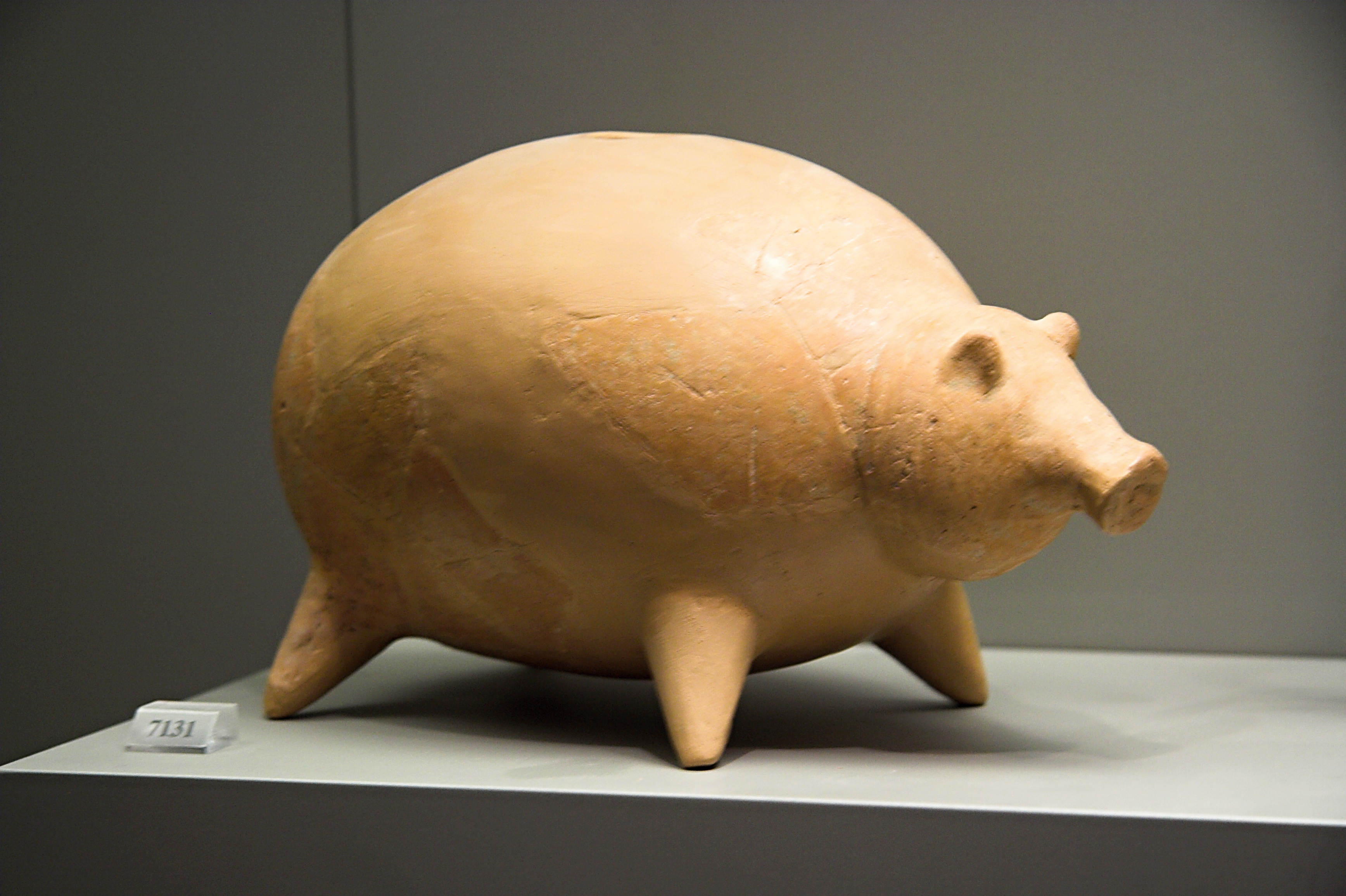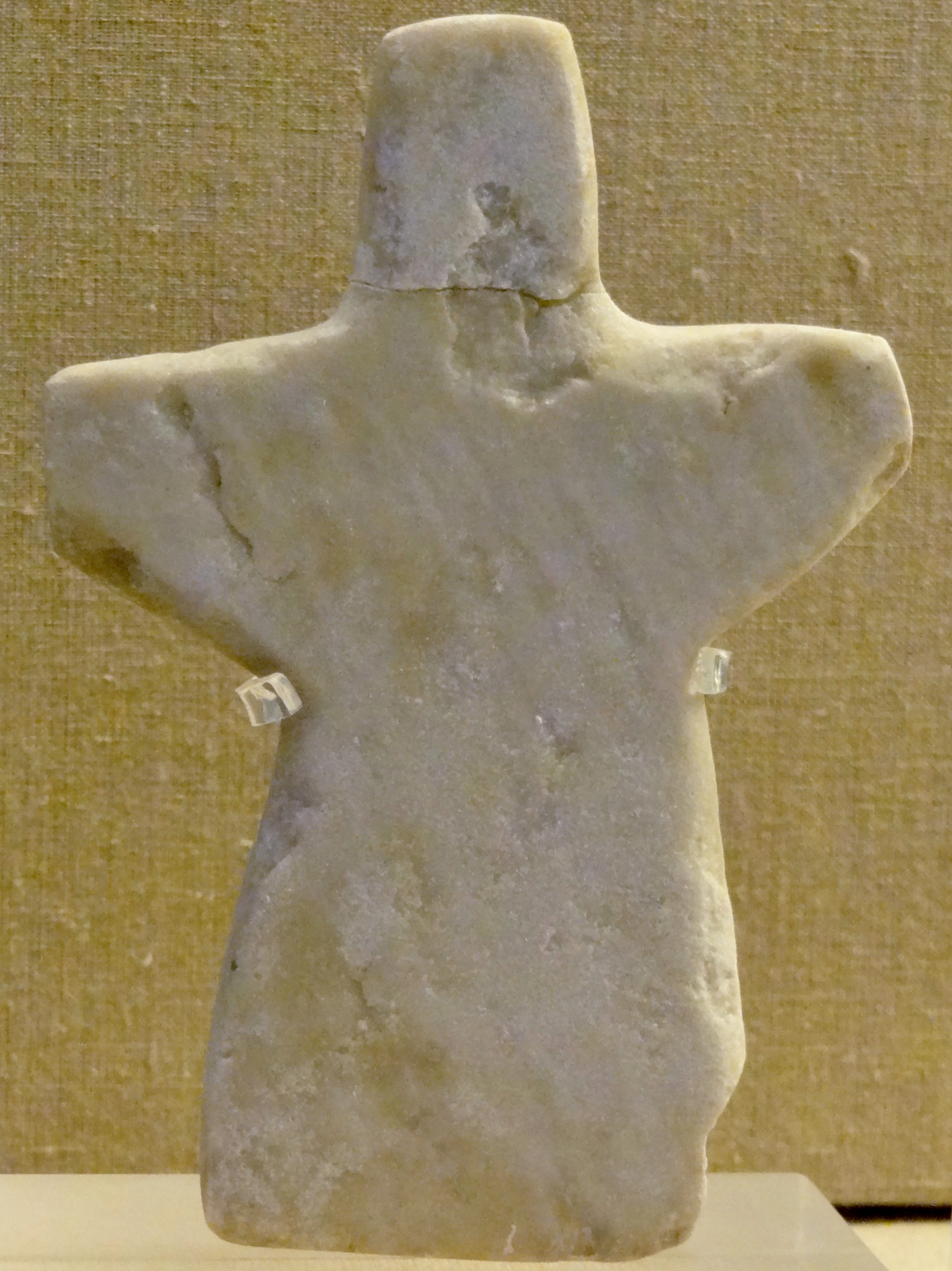|
Skarkos
Skarkos ( el, Σκάρκος) is an early Bronze Age settlement on the island of Ios in Greece. Owing to its well preserved state, Skarkos is one of the most important prehistoric sites in the Aegean and especially the Cyclades.Eric H. Cline (ed.), ''The Oxford Handbook of the Bronze Age Aegean'', , Jan. 2012.M. Marthari, ''Aspects of Potery Circulation in the Cyclades during the Early EB II Period: Fine and Semi-fine Imported Ceramic Wares at Skarkos, Ios'', Horizon 71-84, 2008. Geography Ios, with one of the most sheltered natural harbours in the Cyclades, is located at the crossroads of Cycladic maritime routes. The settlement of Skarkos is situated on a hill in the middle of the west side of Ios, in proximity to the island’s most fertile plains and to its harbour. Excavations Skarkos was systematically excavated during the years 1984-1997. The excavations have been carried out in the north and east sides of the hill. They have brought to light an important early Cycl ... [...More Info...] [...Related Items...] OR: [Wikipedia] [Google] [Baidu] |
Skarkos Hill Settlement On Ios
Skarkos ( el, Σκάρκος) is an early Bronze Age settlement on the island of Ios in Greece. Owing to its well preserved state, Skarkos is one of the most important prehistoric sites in the Aegean and especially the Cyclades.Eric H. Cline (ed.), ''The Oxford Handbook of the Bronze Age Aegean'', , Jan. 2012.M. Marthari, ''Aspects of Potery Circulation in the Cyclades during the Early EB II Period: Fine and Semi-fine Imported Ceramic Wares at Skarkos, Ios'', Horizon 71-84, 2008. Geography Ios, with one of the most sheltered natural harbours in the Cyclades, is located at the crossroads of Cycladic maritime routes. The settlement of Skarkos is situated on a hill in the middle of the west side of Ios, in proximity to the island’s most fertile plains and to its harbour. Excavations Skarkos was systematically excavated during the years 1984-1997. The excavations have been carried out in the north and east sides of the hill. They have brought to light an important early Cycladic s ... [...More Info...] [...Related Items...] OR: [Wikipedia] [Google] [Baidu] |
Skaros
Skaros ( el, Σκάρος), also known as Skaros Rock, Fortress Skaros or Castle Skaros, is a rock formation and collection of ruins on the Greek island of Santorini. History Skaros Rock is a large rock promontory on the Aegean island of Santorini. The formation was created through the volcanic activity (likely in an eruption dated to 68,000 B.C)http://volcano.si.edu/world/volcano.cfm?vnum=0102-04= of the nearby Santorini caldera, and has since been further shaped by erosion and earthquakes. In a nautical context, the formation is referred to as Cape Skaros. A prominent landmark, the elevated position of the rock made it a preferable location for defensive fortifications. The site was initially fortified in the early 13th century by the Byzantine Empire, which employed Venetian architect Giacomo Barozzi to construct a fortress around the promontory. The initial structure, known as "La Roka" ("Upper Castle" in Greek), was completed in 1207. Upon the fortress' completion, Baroz ... [...More Info...] [...Related Items...] OR: [Wikipedia] [Google] [Baidu] |
Cycladic Civilization
Cycladic culture (also known as Cycladic civilisation or, chronologically, as Cycladic chronology) was a Bronze Age culture (c. 3200–c. 1050 BC) found throughout the islands of the Cyclades in the Aegean Sea. In chronological terms, it is a relative dating system for artifacts which broadly complement Helladic chronology (mainland Greece) and Minoan chronology (Crete) during the same period of time. History The significant Late Neolithic and Early Bronze Age Cycladic culture is best known for its schematic flat female idols carved out of the islands' pure white marble centuries before the great Middle Bronze Age (" Minoan") culture arose in Crete, to the south. These figures have been stolen from burials to satisfy the Cycladic antiquities market since the early 20th century. Only about 40% of the 1,400 figurines found are of known origin, since looters destroyed evidence of the rest. A distinctive Neolithic culture amalgamating Anatolian and mainland Greek elements arose ... [...More Info...] [...Related Items...] OR: [Wikipedia] [Google] [Baidu] |
Cyclades
The Cyclades (; el, Κυκλάδες, ) are an island group in the Aegean Sea, southeast of mainland Greece and a former administrative prefecture of Greece. They are one of the island groups which constitute the Aegean archipelago. The name refers to the islands ''around'' ("cyclic", κυκλάς) the sacred island of Delos. The largest island of the Cyclades is Naxos, however the most populated is Syros. History The significant Late Neolithic and Early Bronze Age Cycladic culture is best known for its schematic, flat sculptures carved out of the islands' pure white marble centuries before the great Middle Bronze Age Minoan civilization arose in Crete to the south. (These figures have been looted from burials to satisfy a thriving Cycladic antiquities market since the early 20th century.) A distinctive Neolithic culture amalgamating Anatolian and mainland Greek elements arose in the western Aegean before 4000 BCE, based on emmer and wild-type barley, sheep and goa ... [...More Info...] [...Related Items...] OR: [Wikipedia] [Google] [Baidu] |
Poliochne
Poliochne, often cited under its modern name Poliochni ( el, Πολιόχνη), was an ancient settlement on the east coast of the island of Lemnos. It was settled in the Late Chalcolithic and earliest Aegean Bronze Age and is believed to be one of the most ancient towns in Europe, preceding Troy I. Anatolian features of the earliest layers were affected by cultural influences from Helladic Greece, about the start of Early Helladic II, ca. 2500 BC. The site, with houses huddled together sharing party walls, was unearthed by excavations of the Italian School of Archaeology at Athens (''Scuola archeologica Italiana di Athene''), beginning in 1930.Site publications, such as S. Tibne, A.G. Benevuti, et al., ''Oi neoteres anaskaphese sten Poliochne'', Athens 1994, and C.G. Doumas and V. La Rosa (eds.), ''He Poliochne kai he proime epoche tou Chalkou sto Voreio Aigaio/Poliochni e l'antica et del bronzo nell'Egeo settentrionale'' have appeared in Greek/Italian. It is believed that ... [...More Info...] [...Related Items...] OR: [Wikipedia] [Google] [Baidu] |
Pithos
Pithos (, grc-gre, πίθος, plural: ' ) is the Greek name of a large storage container. The term in English is applied to such containers used among the civilizations that bordered the Mediterranean Sea in the Neolithic, the Bronze Age and the succeeding Iron Age. Pithoi were used for bulk storage, primarily for fluids and grains; they were comparable to the drums, barrels and casks of recent times. The name was different in other languages; for instance, the Hittites used ''harsi-''. Secondarily, discarded pithoi found other uses. Like the ceramic bathtubs of some periods, the size of a pithos made it a convenient coffin. In Middle Helladic burials in Mycenae and Crete, sometimes the bones of the interred were placed in pithoi. The ancient Iberian culture of El Argar used pithoi for coffins in its B phase (1500–1300 BC). The external shape and materials were approximately the same: a ceramic jar about as high as a man, a base for standing, sides nearly straight or ge ... [...More Info...] [...Related Items...] OR: [Wikipedia] [Google] [Baidu] |
Bronze Age Sites In Greece
Bronze is an alloy consisting primarily of copper, commonly with about 12–12.5% tin and often with the addition of other metals (including aluminium, manganese, nickel, or zinc) and sometimes non-metals, such as phosphorus, or metalloids such as arsenic or silicon. These additions produce a range of alloys that may be harder than copper alone, or have other useful properties, such as strength, ductility, or machinability. The archaeological period in which bronze was the hardest metal in widespread use is known as the Bronze Age. The beginning of the Bronze Age in western Eurasia and India is conventionally dated to the mid-4th millennium BCE (~3500 BCE), and to the early 2nd millennium BCE in China; elsewhere it gradually spread across regions. The Bronze Age was followed by the Iron Age starting from about 1300 BCE and reaching most of Eurasia by about 500 BCE, although bronze continued to be much more widely used than it is in modern times. Because historical artworks ... [...More Info...] [...Related Items...] OR: [Wikipedia] [Google] [Baidu] |
Cycladic Art
The ancient Cycladic culture flourished in the islands of the Aegean Sea from c. 3300 to 1100 BCE. Along with the Minoan civilization and Mycenaean Greece, the Cycladic people are counted among the three major Aegean cultures. Cycladic art therefore comprises one of the three main branches of Aegean art. The best known type of artwork that has survived is the marble figurine, most commonly a single full-length female figure with arms folded across the front. The type is known to archaeologists as a "FAF" for "folded-arm figure(ine)". Apart from a sharply-defined nose, the faces are a smooth blank, although there is evidence on some that they were originally painted. Considerable numbers of these are known, although most were removed illicitly from their unrecorded archaeological context, which seems usually to be a burial. Neolithic art Almost all information known regarding Neolithic art of the Cyclades comes from the excavation site of Saliagos off Antiparos. Pottery of ... [...More Info...] [...Related Items...] OR: [Wikipedia] [Google] [Baidu] |
Phylakopi
Phylakopi ( el, Φυλακωπή), located at the northern coast of the island of Milos, is one of the most important Bronze Age settlements in the Aegean and especially in the Cyclades. The importance of Phylakopi is in its continuity throughout the Bronze Age (i.e. from the half of the 3rd millennium BC until the 12th century BC) and because of this, it is the type-site for the investigation of several chronological periods of the Aegean Bronze Age. Excavations Phylakopi was first excavated between 1896 and 1899 under the British School at Athens (as well as all subsequent projects). The excavation was remarkably ahead of its time, with Duncan MacKenzie (the later foreman to Sir Arthur Evans at Knossos) recording detailed stratigraphic information. The excavation revealed a hitherto unknown Bronze Age Cycladic settlement with continuity throughout the Early Bronze Age to the very end of the Late Bronze Age. It was from this excavation that the three phase stratigraphy was sugge ... [...More Info...] [...Related Items...] OR: [Wikipedia] [Google] [Baidu] |
History Of The Cyclades
The Cyclades (Greek: Κυκλάδες ''Kykládes'') are Greek islands located in the southern part of the Aegean Sea. The archipelago contains some 2,200 islands, islets and rocks; just 33 islands are inhabited. For the ancients, they formed a circle (κύκλος / kyklos in Greek) around the sacred island of Delos, hence the name of the archipelago. The best-known are, from north to south and from east to west: Andros, Tinos, Mykonos, Naxos, Amorgos, Syros, Paros and Antiparos, Ios, Santorini, Anafi, Kea, Kythnos, Serifos, Sifnos, Folegandros and Sikinos, Milos and Kimolos; to these can be added the little Cyclades: Irakleia, Schoinoussa, Koufonisi, Keros and Donoussa, as well as Makronisos between Kea and Attica, Gyaros, which lies before Andros, and Polyaigos to the east of Kimolos and Thirassia, before Santorini. At times they were also called by the generic name of Archipelago. The islands are located at the crossroads between Europe and Asia Minor and the Near ... [...More Info...] [...Related Items...] OR: [Wikipedia] [Google] [Baidu] |
.jpg)



